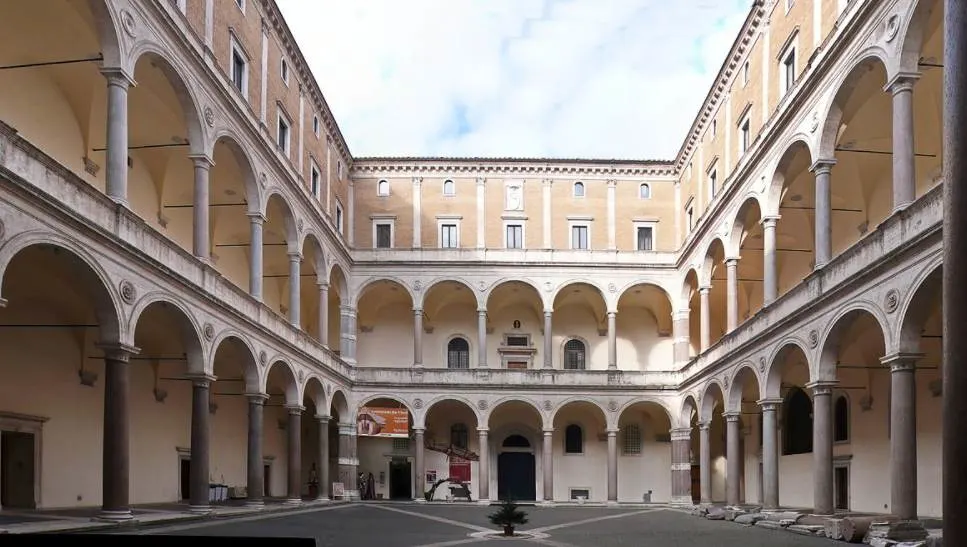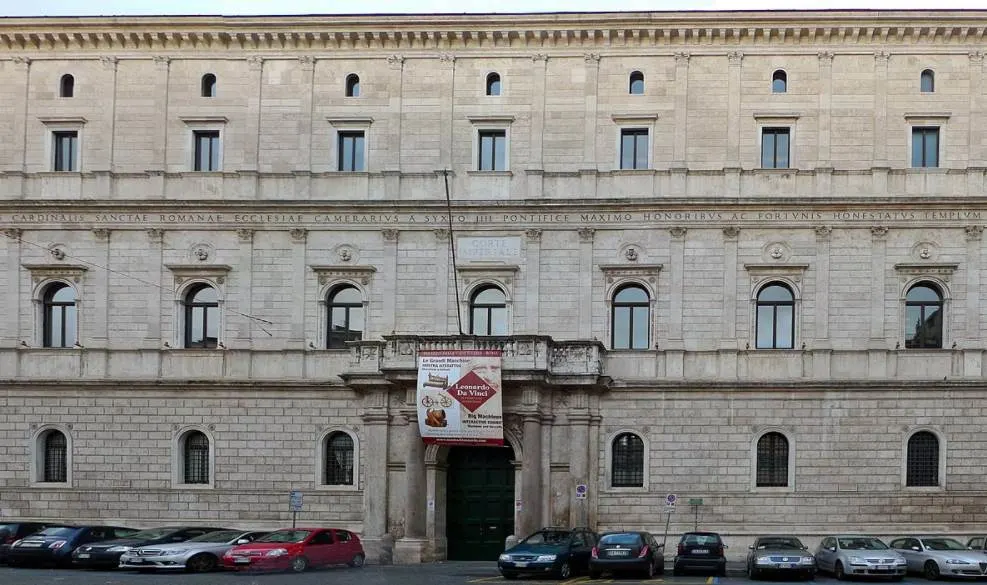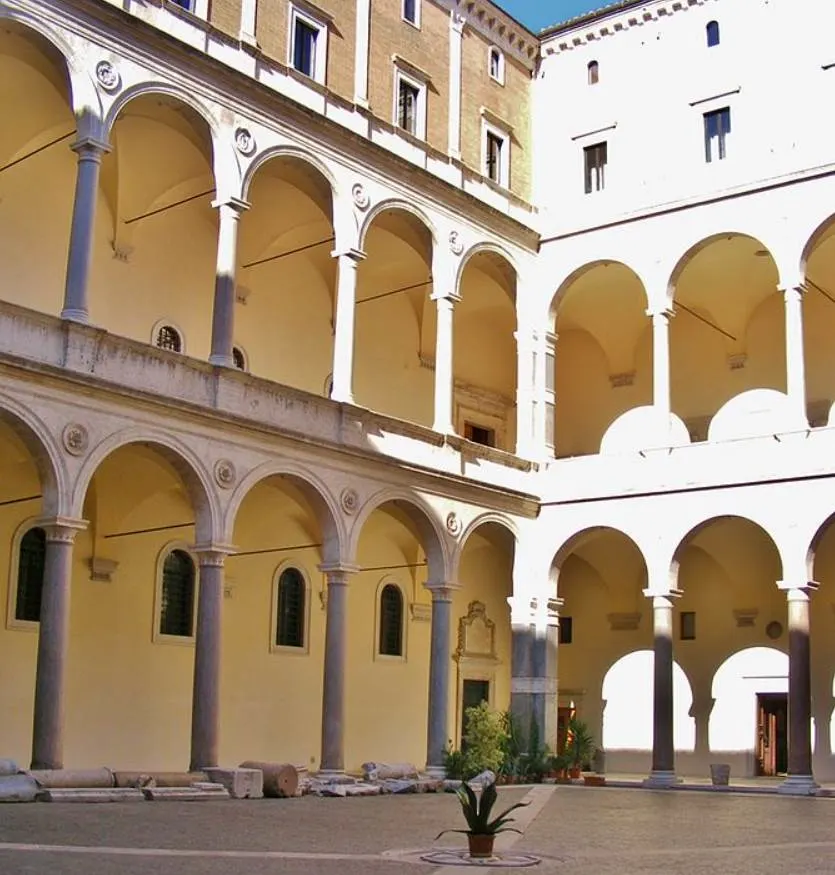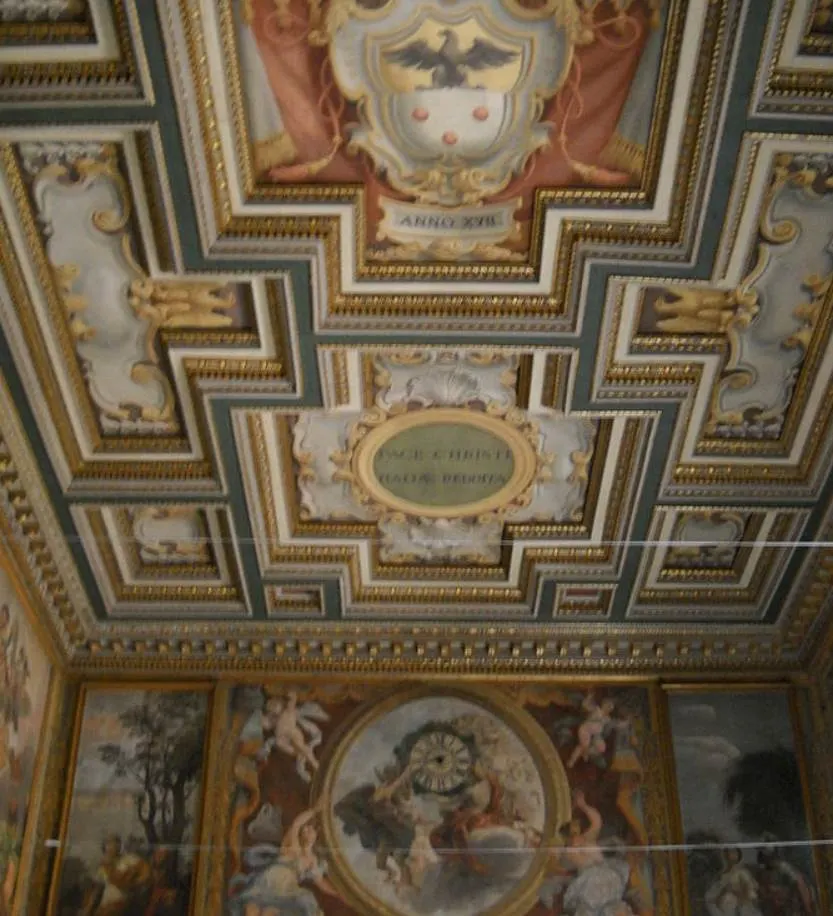The first Renaissance buildings were erected in the Italian city of Florence, the capital of the country’s Tuscany Region. This is not surprising because this amazing city is considered to be the birthplace of the Renaissance.
The revival of an interest in classical architecture resulted in a definite move away from Gothic architecture, a style that attempted to reach the heavens on Earth with extremely high windows and pointy spires.
Renaissance architecture quickly spread to other cities in Italy and eventually to other parts of Europe as well. In this article, we’ll take a closer look at the Palazzo della Cancelleria, an amazing palace built exclusively in Renaissance style.
1. It’s located in the historical heart of Rome
The Palazzo della Cancelleria is a fascinating historic structure located in the heart of a city full of historic buildings. It’s located in between the Palazzo Farnese to the south and the Piazza Navona to the north.
This is pretty much right in the heart of the center of Rome on the east bank of the Tiber River.
The northern section of the palace is bounded by the Corso Vittorio Emanuele II, a major thoroughfare in this section of the city, and the western side by the Piazza della Cancelleria. A popular market called the Campo de’ Fiori adjoins it n the utmost southeastern section.

2. It was commissioned by the man who invited Michelangelo to Rome
The Palazzo della Cancelleria was commissioned to become the private palace of Cardinal Raffaele Riario (1461-1521), a man who quickly rose to the ranks of the Catholic church and who amassed a lot of wealth along the way.
This also means that it was originally known as the Palazzo Riario. When it turned out that he was aware of a murder plot against Pope Leo X, the palace was seized in 1517 and became the seat of the Apostolic Chancellery. It was used for the offices of the Pope for multiple centuries.
Raffaele Riario was also a great patron of the arts and is credited as being the man who invited Michelangelo (1475-1564) to Rome. This invitation eventually resulted in multiple masterpieces being produced by the famous renaissance artist during the early 16th century.

3. It was the first complete Renaissance structure in Rome

Although Renaissance architecture already flourished in Florence since the early 15th century, mainly due to the input of Filippo Brunelleschi (1377-1446) who managed to build the astounding dome of Florence Cathedral.
It took a bit longer before this style was introduced to Rome, though, which means that this palace was the first building that was completely built in the Renaissance style in Rome.
The Palazzo della Cancelleria was built between 1489 and 1513 and was designed by architects Baccio Pontelli and Antonio da Sangallo the Elder. Pontelli died just 3 years after construction had started and was also the architect of the Sistine Chapel.

4. The courtyard features ancient columns and was designed by Bramante
The building wasn’t completely designed by these 2 architects because the courtyard was designed by Donato Bramante (1444-1514), the original architect of St. peter’s Basilica and the man who introduced the High Renaissance architectural style to Rome.
The courtyard is one of the most fascinating features of the entire building, and not just because of its remarkable design by Bramante. The columns are ancient columns that once supported the Theater of Pompey.
This theater was completed during the final years of the Roman Republic in 55 B.C. and was the first permanent theater in ancient Rome. Unlike its name suggests, it was located within the city of Rome and its ruins are located at a square called the Largo di Torre Argentina.

5. It’s part of an extended UNESCO World Heritage site
One of the most remarkable facts about the Palazzo della Cancelleria is that its property of the Holy See, one of the multiple structures that are so-called extraterritorial properties of the Roman Catholic Church.
Since most of these structures have incredible historic value, these were all listed as a UNESCO World Heritage site as the Properties of the Holy See in that City along with the historic center of Rome.

More interesting facts about the Palazzo della Cancelleria
6. The palace was confiscated by the Catholic Church because it was deemed that Cardinal Raffaele Riario was aware of a murder plot against the Pope in the year 1517. Riario made it to become the Camerlengo of the Holy Roman Church, a man overseeing the property of the Holy See.
While the actual plotters were arrested and executed, Riario wasn’t charged with any criminal offense and was spared. This was only after he gave up ownership of his palace. He eventually died 4 years later in Naples in the year 1521.
7. Rafaelle Riario was the man who purchased a sculpture called “Sleeping Cupid” from Michelangelo in 1496 which he deemed was an ancient work. He quickly found out that it was a contemporary work carved by Michelangelo who used acid to make it appear ancient.
Regardless of the fraud, he was so impressed by the quality of this sculpture (which is now lost) that he became Michelangelo’s patron after inviting him to Rome.
8. The 44 columns of the palace’s courtyard once supported the portico of the upper stands of the Theater of Pompeii. The design of the courtyard was derived from that of the Palazzo Ducale in Urbino, the birthplace of Donato Bramante who might have had a hand in its design as well.

9. An excavation project conducted between 1988 and 1991 uncovered the foundations of an ancient structure known as the Basilica di San Lorenzo in Damaso.
This structure is believed to have been erected in the year 380 A.D. by Pope Damasus I. This ancient structure was demolished by Riario to make way for his palace which eventually became the Palazzo della Cancelleria.
10. Giorgio Vasari (1511-1574) was a great art historian who became famous for writing about the lives of the famous Renaissance artists of the 15th and 16th centuries.
This was ultimately his main talent, although he was also an artist who received multiple commissions, including one to paint a fresco at the Palazzo della Cancelleria.
He managed to complete the project in 100 days in 1547 and boasted about this great achievement to Michelangelo. When the famous Renaissance master saw the work he replied: “Si vede” which means “It shows.”
Then again, Michelangelo wasn’t easy to impress, especially not during the final decades of his life.

